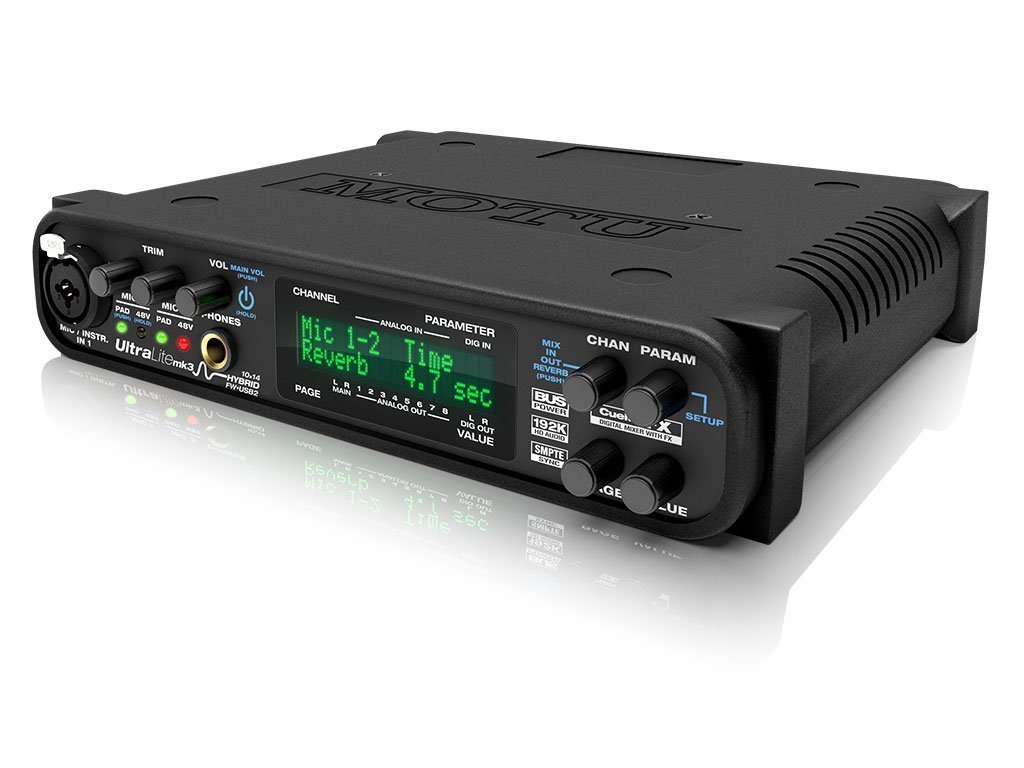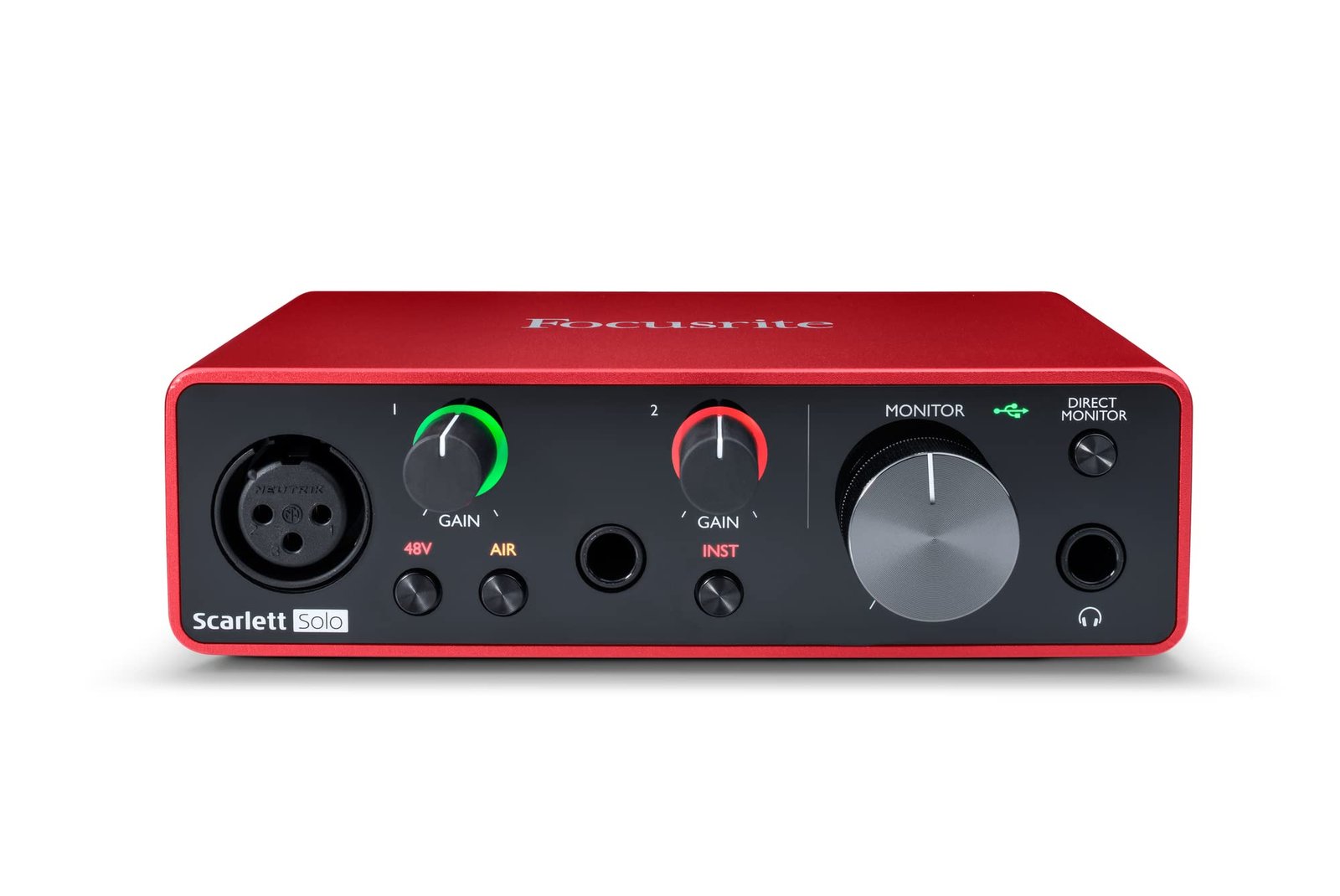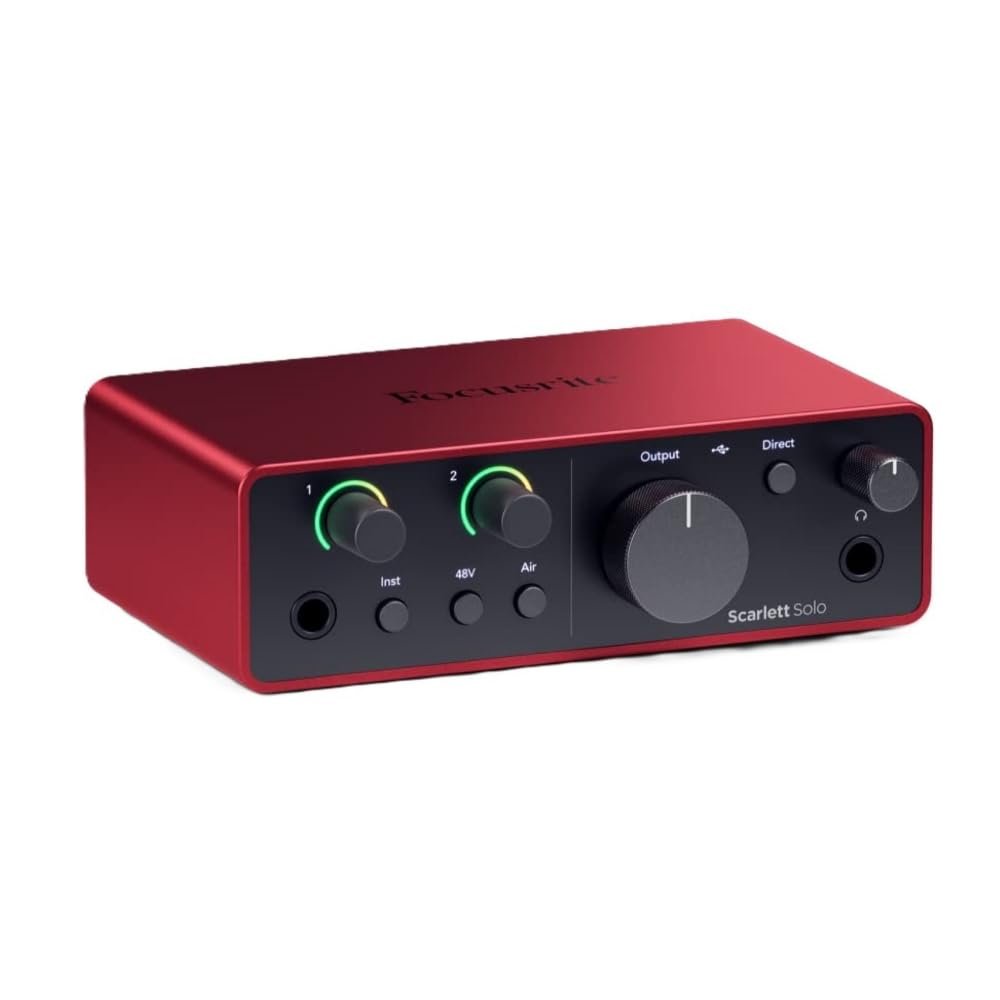Audio production often needs precise and high-quality sound equipment, and audio interfaces play a critical role.
Among the options available, FireWire audio interfaces offer reliable connectivity and data transfer rates.
These devices facilitate connecting various audio equipment like microphones, instruments, and studio monitors to your computer, streamlining the recording and editing process.
FireWire audio interfaces gained popularity for their ability to transfer large amounts of data swiftly.
This is crucial in reducing latency and ensuring seamless audio transmission.
You might consider a FireWire interface if your setup demands high performance and consistency.
These devices are often noted for their sturdiness and ability to handle multiple inputs, making them a valuable asset for both home studios and professional settings.
FireWire audio interfaces gained popularity for their ability to transfer large amounts of data swiftly.
This is crucial in reducing latency and ensuring seamless audio transmission.
You might consider a FireWire interface if your setup demands high performance and consistency.
These devices are often noted for their sturdiness and ability to handle multiple inputs, making them a valuable asset for both home studios and professional settings.
Top FireWire Audio Interfaces
You’re about to discover some of the best options for FireWire audio interfaces.
These picks are sure to meet your needs, whether you’re setting up a home studio or upgrading your existing setup.
MOTU UltraLite-MK3 Hybrid Audio Interface
If you’re after a versatile audio interface that offers both FireWire and USB connectivity, this is an option worth exploring.
- Dual connectivity options provide flexibility.
- Built-in DSP effects enhance your audio possibilities.
- Supports high-quality audio resolutions.
- Preamps might not match the top contenders.
- Occasional setup challenges reported.
- Limited total user reviews available.
The MOTU UltraLite-MK3 Hybrid Audio Interface allows you to toggle between FireWire and USB2, making it adaptable for various setups.
Musicians and producers looking for reliable integration with digital audio workstations might appreciate the high sample rates and the robust build quality.
In terms of versatility, the interface boasts a range of input and output options, including the critical mic/instrument inputs you need to capture sound effectively.
The addition of built-in DSP effects, like mixing and EQ, empowers you to refine your audio directly on the device.
Some users have noted preamp quality could be improved, suggesting it might not surpass some competitors in that aspect.
Setup hiccups have been mentioned too, particularly when switching between connectivity methods.
Nonetheless, its features and construction often deliver satisfying audio performance.
Focusrite Scarlett Solo 3rd Gen
If you’re looking for an easy-to-use solution for high-quality recording at home, this audio interface could be a great fit.
- Excellent mic preamps enhance clarity.
- Seamless setup for Mac and PC.
- Durable and portable design.
- Limited to two inputs.
- USB-powered only.
- Possible audio popping during restarts.
The Focusrite Scarlett Solo 3rd Gen is all about simplicity and quality, making it perfect for singer-songwriters and podcasters.
It simplifies the recording process with user-friendly controls and solid build quality.
This makes it a sturdy companion wherever you’re creating music.
For those who need top-notch sound, its mic preamps and Air mode add brightness to vocal recordings.
The compact interface packs a punch, delivering impressive audio results while being straightforward to use.
This interface is more than just a basic tool; it offers software bundles for creative expansion.
Whether you’re recording instruments or vocals, you might find everything you need to get started right in the box.
Focusrite Scarlett Solo 4th Gen
This audio interface is perfect for musicians and producers seeking studio-quality sound at an affordable price.
- Produces studio-grade sound with a remarkable dynamic range.
- Packed with essential recording software.
- Easy setup and user-friendly interface.
- Limited to two input channels.
- Heavily reliant on USB connectivity.
- No MIDI ports for digital instruments.
The Focusrite Scarlett Solo 4th Gen offers an impressive blend of powerful features and simplicity, making it a top choice for aspiring musicians looking to record high-quality audio.
This interface provides you with all the tools you need to start capturing your music with its included software bundle.
The enhanced Air mode brings an extra boost to your vocals and guitars, adding depth and clarity.
You’ll find the 120dB dynamic range to be a noticeable step up in achieving professional-sounding recordings from your home studio.
With its straightforward design, setting up and getting started is a breeze, making it suitable for beginners and seasoned musicians alike.
Though its capabilities are somewhat limited by its two-input configuration, it’s worth considering if you need a reliable, entry-level device.
While the lack of MIDI ports might be a downside for some, the outstanding sound quality it delivers helps to make up for it.
This interface is perfect for those prioritizing simplicity and efficiency in the recording process.
M-Audio FireWire Solo Audio Interface
If you’re a songwriter looking for a portable and user-friendly audio interface, the M-Audio FireWire Solo is worth considering for its ease of use and compatibility with popular music software.
- Convenient for recording guitars and vocals with FireWire connectivity
- Portable and bus-powered, ideal for traveling musicians
- Compatible with both Mac and PC systems
- Potential issues with driver support on newer systems
- Limited support for recent Mac OS versions
- May experience latency problems
The M-Audio FireWire Solo offers a straightforward way to record and produce music directly on your computer.
It comes equipped with essential inputs for guitars and microphones, making it a versatile choice for musicians working with different instruments.
Despite some compatibility concerns with newer operating systems, the unit still finds favor among users for its solid construction and portability.
Its bus-powered design makes it a reliable companion for on-the-go recording sessions without the need for external power.
Consider the FireWire Solo if you need a durable and cost-effective audio interface for basic recording tasks.
Just be sure to check the compatibility with your current setup to avoid any software hurdles.
MOTU MicroBook IIc
Consider this audio interface if you want a compact and versatile option for your recording needs.
- Compact design that’s easy to transport
- Versatile input options including mic, guitar, and stereo line-level
- Built with durable metal construction
- Limited driver support on some high-DPI displays
- Can be a bit tricky to set up for specific devices
- Reports of issues with certain condenser mics
The MOTU MicroBook IIc is designed to fit effortlessly into your setup with its compact size.
Its rugged metal exterior ensures it can endure the rigors of travel, making it a reliable companion for on-the-go recording or DJing activities.
With multiple input options, it supports different equipment and setups, offering flexibility to audio enthusiasts.
You might find the range of outputs handy, especially if you plan to integrate it into a more complex audio rig.
Aside from that, its software is quite powerful, allowing you to tweak settings on both Mac and PC platforms.
This feature is great for managing routing and effects.
While it does some things exceptionally well, you should be aware that some users have faced minor compatibility challenges.
Certain advanced setups might require a bit of troubleshooting, particularly with specific microphones.
Nonetheless, the possibilities it unlocks in a small package might just make it the audio interface you’re looking for.
Buying Guide
When you’re on the hunt for a FireWire audio interface, there are a few things you should keep in mind to ensure you make the best choice for your needs.
Key Features to Consider:
-
Number of Inputs/Outputs: Determine how many instruments or microphones you’ll connect at once. More ports mean more flexibility.
-
Sample Rate and Bit Depth: Higher rates often lead to better quality. Look for interfaces supporting at least 24-bit/96kHz for superior sound.
-
Phantom Power: Consider this if you use condenser microphones. Check if the interface supplies stable phantom power.
Budget and Compatibility:
-
Budget: Prices vary widely. Set a realistic budget and explore options within that range. Balance cost with necessary features.
-
Compatibility: Make sure the interface is compatible with your computer’s operating system. Check if it supports macOS, Windows, or both.
Additional Considerations:
-
Portability: If you’re on the move, consider the interface’s size and weight.
-
Latency: Lower latency is better for live recording, so check for direct monitoring features.
Evaluate these features and match them to your requirements to find the best FireWire audio interface for you.
Happy hunting!
Frequently Asked Questions
FireWire audio interfaces remain relevant for some users due to their reliability and audio quality.
You might consider how to connect them to modern computers, especially if you’re interested in models with FireWire ports, like certain Focusrite ones.
You should be aware of compatibility with PCs and their power transmission capabilities.
What are the top picks for FireWire audio interfaces right now?
Even though newer technologies are emerging, FireWire audio interfaces like the Focusrite Saffire series and the MOTU 828mk3 Hybrid still have their fans.
They provide reliable performance favored by many audio professionals.
Consider these models if you’re looking for robust connectivity and dependable audio quality.
How can I connect a FireWire audio interface to a USB port?
To connect a FireWire audio interface to a USB port, you’ll likely need a FireWire to USB adapter.
This device helps bridge the gap between older FireWire technology and the more commonly used USB ports.
These adapters can be found online or at electronics stores.
Which Focusrite models come with FireWire connectivity?
Focusrite made several models supporting FireWire, including the Saffire Pro 14, 24, and 40.
These interfaces are well-regarded for their high-quality sound and durability.
If you’re looking for FireWire options within the Focusrite range, these models are worth checking out.
Are FireWire audio interfaces still a good choice for recording?
FireWire audio interfaces can still be a solid choice for recording, especially if you have existing equipment that uses this connection type.
They offer stable data transfer and high-quality audio performance.
However, consider compatibility with your current devices and long-term connectivity needs.
Can I use a FireWire interface with my PC, and what do I need to make it happen?
Yes, you can use a FireWire interface with your PC.
To do this, you might need a FireWire PCI or PCIe card if your computer doesn’t have a built-in FireWire port.
These cards are available from computer hardware retailers and can help integrate FireWire interfaces with your setup.
Do FireWire cables transmit both audio and power?
FireWire cables transmit audio data efficiently, but they don’t typically supply power to devices.
You may need an external power source to operate your FireWire audio interface.
This requirement could vary based on the specific model and its power needs, so checking the device’s specifications is crucial.






